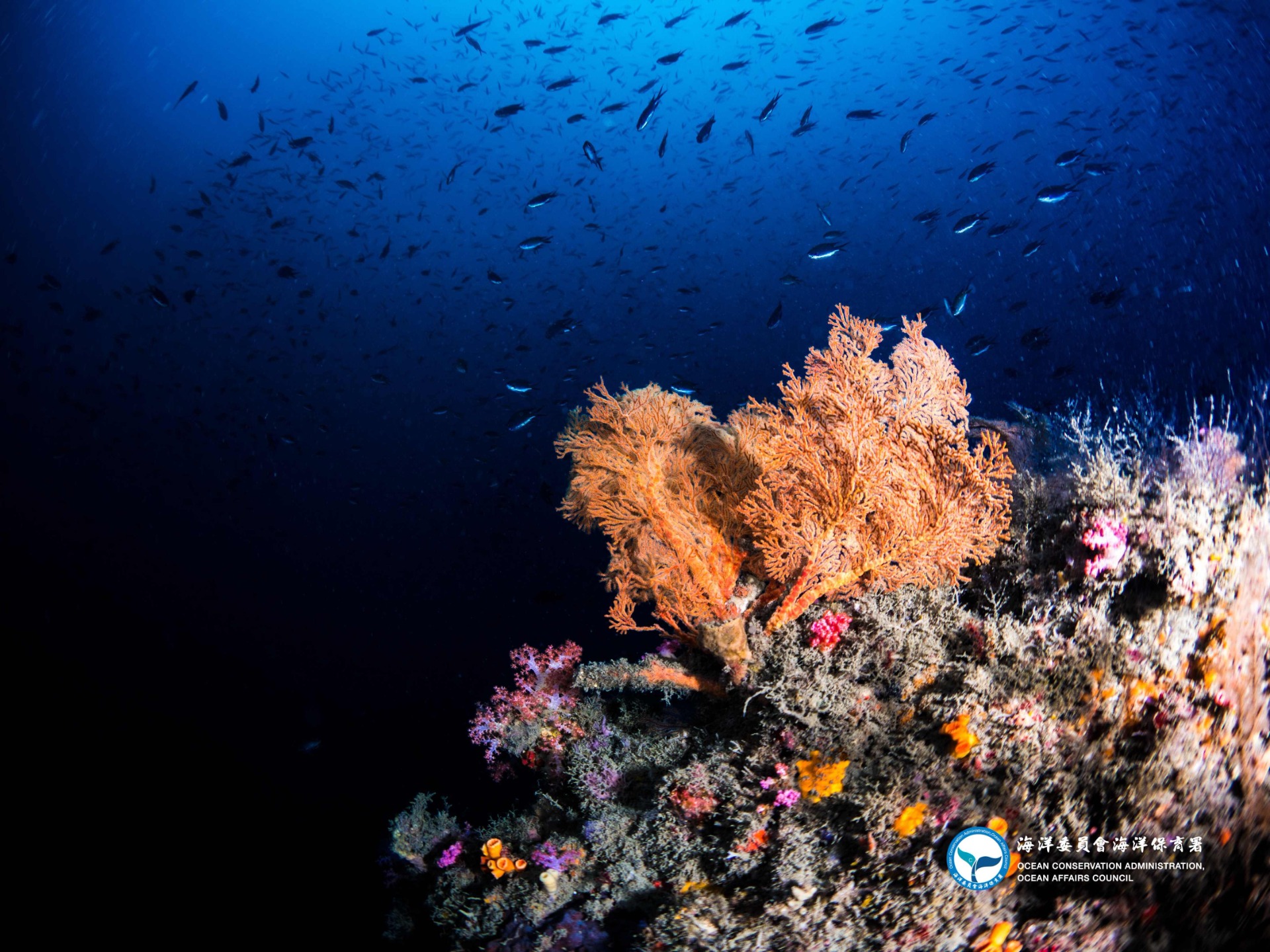Vol. 34
國際海洋資訊
International Ocean Information
Tides Are Changing ―
International Trends and Current Status of Marine Conservation over the Past Decade
Kwang-Tsao Shao
Emeritus Research Fellow, Biodiversity Research Center, Academia Sinica
Emeritus Chair Professor, Institute of Maring Biology, National Taiwan Ocean University
Keywords |Marine Protected Areas, Marine Conservation, Marine Protected Areas, Sustainable Development Goal, Climate Change
On June 8, 2023, the United Nations hosted its annual World Oceans Day celebration featuring the theme "Planet Ocean: Tides Are Changing." Over the past decade, the international community has increasingly prioritized marine conservation due to the growing severity of threats and destruction to the ocean caused by overfishing, illegal fishing, pollution, habitat destruction, climate change, and ocean acidification. The United Nations in 2015 formulated the "Ocean Goal" in the Sustainable Development Goals (SDGs) and a number of important international treaties have been formulated or adopted in the past three years. For example:
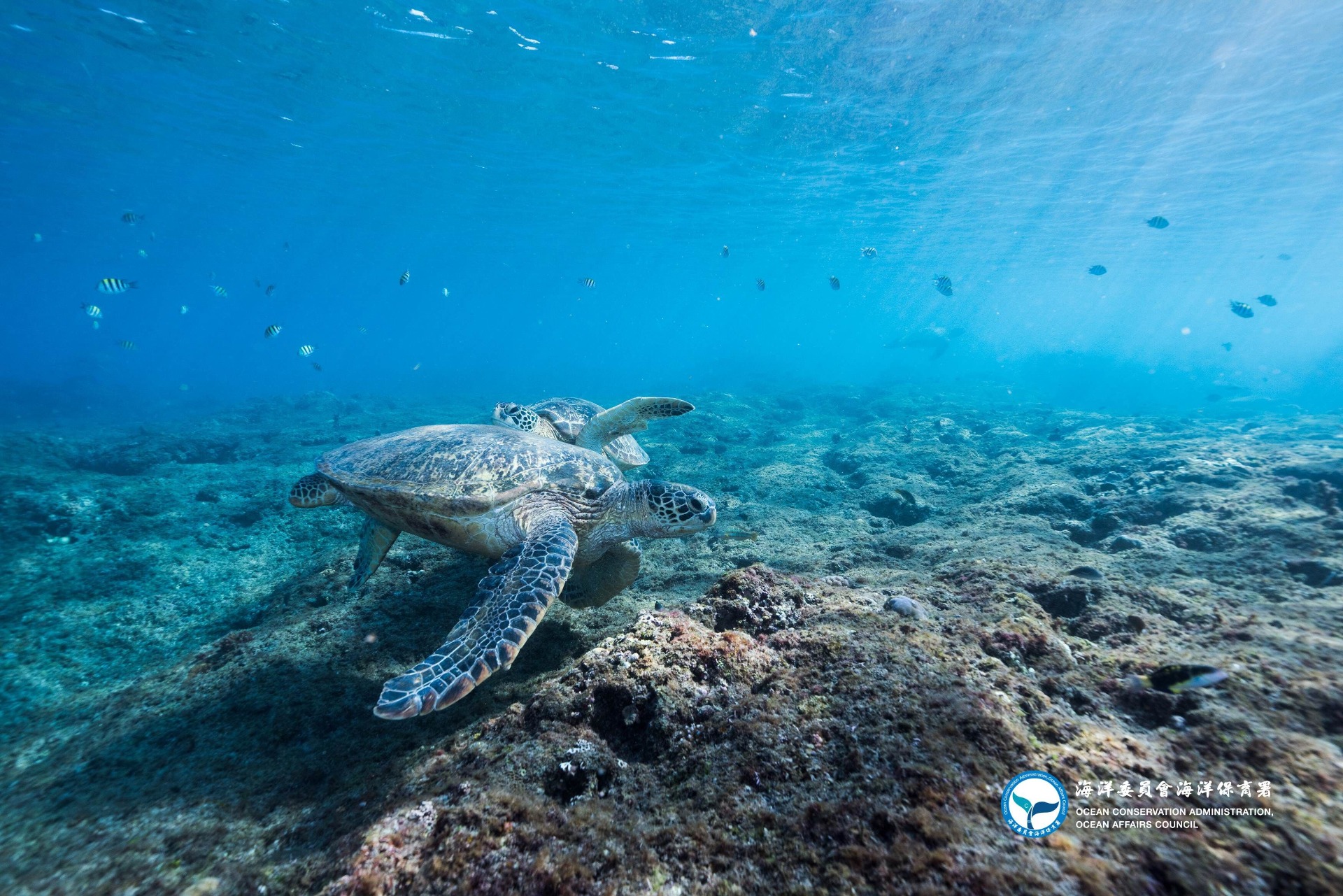

Pollution Control: In March 2022, the United Nations Environment Assembly (UNEA) launched negotiations for the "Global Treaty for Plastic Pollution," aiming to establish a legally binding agreement by the end of 2024.1
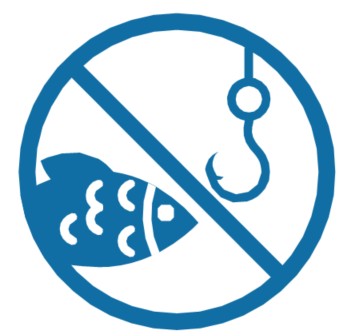
Prevention of Overfishing and Illegal Fishing: In June 2022, the World Trade Organization (WTO) adopted the "Agreement on Fisheries Subsidies," seeking to end harmful fisheries subsidies.

Habitat Protection: In December 2022, the 15th Conference of the Parties to the Convention on Biological Diversity (CBD-COP15) adopted the Global Biodiversity Framework (GBF), which includes 23 specific action targets. Among them, the 30×30 target―which aims to protect 30% of the world's land and ocean areas by 2030―has garnered significant global attention. Additionally, in June 2023, the United Nations adopted the "BBNJ Agreement" (also referred to as "High Seas Treaty") to protect deep-sea biodiversity.

Species Conservation: The three recent meetings of CITES (Convention on International Trade in Endangered Species of Wild Fauna and Flora) have seen significant expansions of marine species protection. For example, COP19 in November 2022 increased the proportion of CITES-regulated sharks and rays among all internationally traded species.

Addressing Ocean Acidification and Warming Caused by Climate Change: Blue carbon ecosystems have been vigorously promoted by countries since it is the most natural solution to mitigate climate change. At the same time, countries are also incorporating blue carbon into carbon markets and carbon trading mechanisms.
These critical conservation efforts align closely with each sub-target of SDG 14 (the United Nations Sustainable Development Goal 14) established in 2015. The current year of 2025 marks the 10th anniversary of the SDGs, and it is evident that marine conservation has received increasing global attention over the past decade. However, the implementation of some international treaties still requires time before they can be fully enforced; nonetheless, marine conservation is a race against time and its implementation cannot be delayed. Fortunately, Taiwan's Legislative Yuan eventually passed the Marine Conservation Act in July 2024. Under the dedicated efforts of the Ocean Conservation Administration, its regulations have been gradually drafted and officially released for public consultation. With collective efforts, it is hoped that Taiwan's oceans will soon regain their former beauty.
Marine Conservation Is More Important and Urgent than Terrestrial Conservation
"Planet Ocean: Tides Are Changing" was the theme of World Oceans Day on June 8, 2023, symbolizing the dynamic nature of the oceans and highlighting the urgent need for transformative actions to address the challenges facing the world's oceans (Figure 1). Due to factors such as overfishing, habitat destruction, climate change, ocean acidification, and pollution, our oceans are undergoing significant changes. Understanding and recognizing these changes are crucial for effective marine protection. Therefore, we need to encourage the exploration and adoption of innovative technologies and scientific research (Science, Technology & Innovation; STI) and to implement effective management in order to respond to new challenges and trends. In 2017, the United Nations launched the "UN Decade of Ocean Science for Sustainable Development (2021-2030)" framework initiative, commonly known as the "Ocean Decade," which represents an opportunity we can leverage.
Over the past two decades, the author has attended eight Conference of the Parties to the Convention on Biological Diversity (CBD-COP), two IUCN World Parks Congress (WPC), and four IUCN International Marine Protected Area Congress (IMPAC), all of which are key international conferences related to nature conservation. Through these experiences, it is evident to the author that global conservation trends have shifted from prioritizing terrestrial conservation in the past to giving increased importance to marine conservation. This shift is primarily due to the fact that the loss and extinction of marine biodiversity are significantly more severe than those of terrestrial species, and also marine conservation is far more complex and challenging than terrestrial conservation. It is crucial for everyone to recognize and understand the destructive factors so that we can develop targeted solutions and effective conservation strategies.
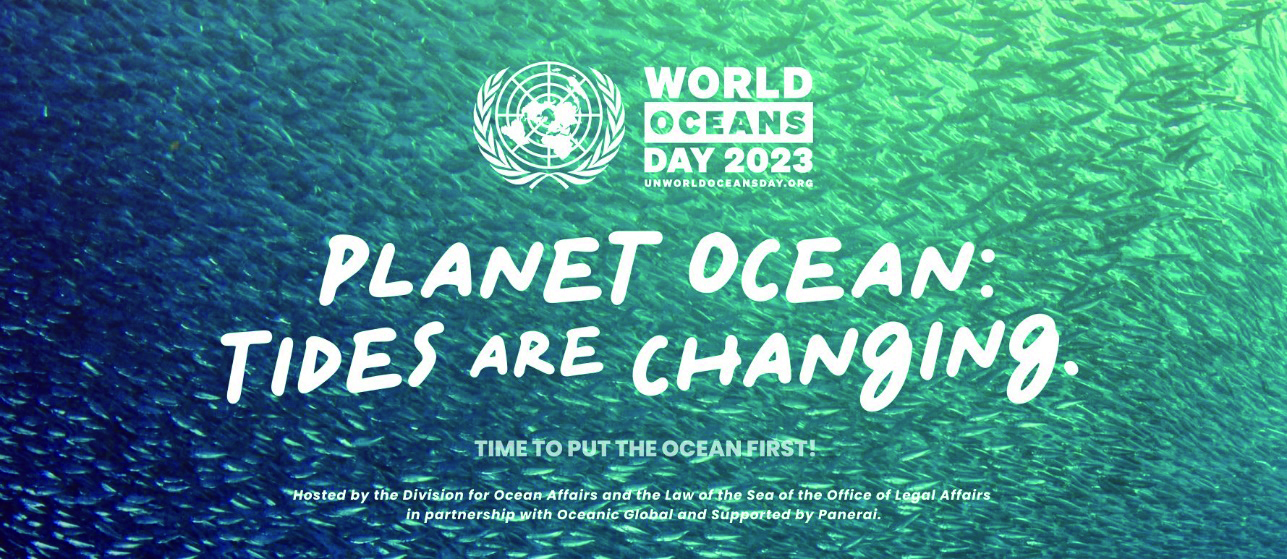
Figure 1. "Planet Ocean: Tides Are Changing" was the theme of World Oceans Day on June 8, 2023. The figure was on the homepage of the United Nations website at that time.
The Benefits of the United Nations Designating the Ocean as an Independent Sustainable Development Goal (SDG 14)
In 2015, the United Nations Sustainable Development Goals (SDGs) designated marine life (Life below Water, SDG 14) and terrestrial life (Life on Land, SDG 15) as separate goals among the 17 SDGs. The most significant benefit of this distinction is that marine conservation is no longer overshadowed or neglected by terrestrial conservation. Furthermore, the most commendable aspect of SDG 14 is that its 10 sub-goals explicitly address the various human-induced damages and threats to the marine ecosystem and set clear targets and deadlines to tackle the key issues, including:
- Reduce marine pollution (14.1)
- Protect and restore marine and coastal ecosystems (including actions by ecosystem-based approaches) (14.2)
- Reduce ocean acidification (14.3)
- Sustainable fishing (including bans on overfishing and illegal fishing) (14.4)
- Conserve coastal and marine areas (including marine protected areas, MPAs) (14.5)
- End subsidies contributing to overfishing (14.6)
- Increase the economic benefits from sustainable use of marine resources (14.7)
- Increase scientific knowledge, research, and technology for ocean health (14.A)
- Support small scale or artisanal fisheries (14.B)
- Implement and enforce International Sea Law (14.C)
Fisheries issues alone account for five of the targets listed above. In order to make people realize that human-induced destruction is the biggest killer of marine biodiversity (Figure 2) and to change the past misattribution of blaming fisheries depletion and marine ecosystem degradation on "climate change," the United Nations designated a separate SDG 13 to limit and adapt to "climate change." Through such revisions, it is possible to avoid the mutual blame-shifting among governments and agencies. Instead, they must take direct responsibility for their respective domains and implement effective governance measures to address the pressing issues.
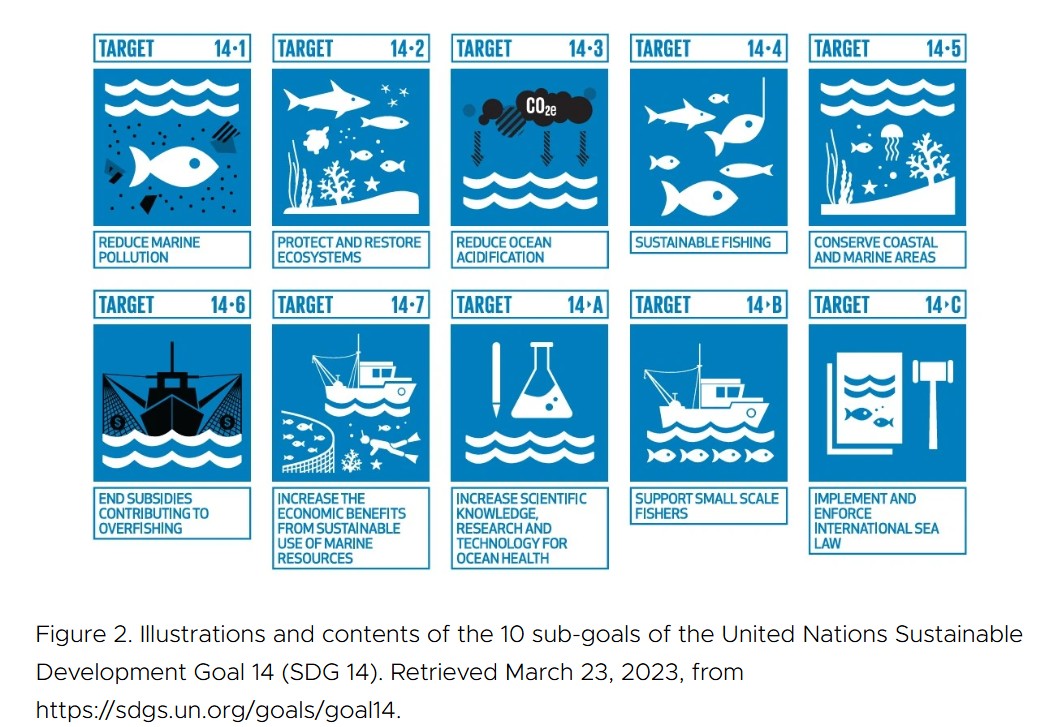
Major Advances in Global Marine Conservation over the Past Three Years
Through the joint efforts and advocacy of global conservation non-governmental organizations (NGOs), including the International Union for Conservation of Nature (IUCN), World Wildlife Fund for Nature (WWF), Ocean Conservancy, Greenpeace, and The Nature Conservancy (TNC), as well as numerous marine biologists, several groundbreaking advancements in marine conservation have been achieved in the past three years.
1. Pollution Control
In March 2022, the United Nations Environment Assembly (UNEA-5.2) held in Nairobi, Kenya, endorsed the "End Plastic Pollution" resolution, launching the negotiation process for a "Global Plastics Treaty" with the goal of adopting a legally binding agreement by the end of 2024. This treaty seeks to comprehensively address plastic pollution problems, particularly the plastic waste in the marine environment. The resolution authorized the establishment of an Intergovernmental Negotiating Committee (INC) to lead the negotiations, and the INC has since held five sessions to deliberate and finalize the treaty's contents (Figure 3).
Key discussion points and controversies include:
- Should plastic production be limited? The EU, some small island nations, and environmental organizations advocated for global production caps to reduce pollution at its sources. However, oil-producing countries (e.g., Saudi Arabia) and petrochemical giants (e.g., the US and China) argued that the treaty should focus on waste recycling and reuse rather than production limits.
- Only some countries supported a complete ban on certain single-use plastic products (e.g., plastic bags, straws, and Styrofoam containers).
- Some developing countries demanded that developed countries provide them with technical and financial support.

Figure 3. Timeline for the Global Plastics Treaty negotiations, adapted from https://www.genevaenvironmentnetwork.org/resources/updates/towards-plastics-pollution-inc-4/.
The final treaty may include:
- Global targets for reducing plastic pollution (though it may not impose strict production caps).
- Bans or restrictions on specific single-use plastics and hazardous additives.
- International cooperation mechanisms (such as technology transfers and financial support).
However, if there are significant disagreements among countries, the treaty may only serve as a broad framework, allowing countries to independently decide their implementation strategies—similar to the 2015 "Paris Climate Agreement."
2. Preventing Overfishing and Illegal Fishing
According to data from the United Nations Food and Agriculture Organization (FAO), approximately 35% of global fishery resources are overexploited. One of the main reasons for this is government subsidies that encourage illegal, unreported, and unregulated (IUU) fishing and overfishing (Figure 4). To address this issue, the World Trade Organization (WTO) began negotiations in 2001, aiming to establish a global agreement to end harmful fisheries subsidies.
In June 2022, the WTO adopted the "Fisheries Subsidies Agreement (FSA)" at the 12th Ministerial Conference (MC12), making it the first trade agreement in WTO history with environmental protection as its core. This agreement imposes the first-ever restrictions on the following subsidies:
- Subsidies that directly support IUU fishing (e.g., financial aid and fuel subsidies).
- Subsidies for fisheries operating on overfished stocks.
- Subsidies for fisheries in the "unregulated" high seas (i.e. international waters where fishing is not yet managed by an intergovernmental organization).
In January 2023, Switzerland became the first country to ratify the agreement, followed by other nations such as the United States (US), Japan, and the European Union (EU) member states.
In November 2023, the second phase of negotiations aimed to eliminate all subsidies related to overfishing was conducted. However, developing countries requested Special and Differential Treatment (SDT) provisions, seeking a longer transition period. Nations such as China and India advocated for retaining some offshore fishing subsidies to support small-scale fisheries and livelihoods. Compared with developing countries, the EU and the US advocated the complete abolition of fuel subsidies and fleet construction subsidies to reduce the impact on the ecology.
At the 13th Ministerial Conference (MC13) in 2024, countries failed to reach a comprehensive agreement. The key challenges remain in the adaptation, regulatory enforcement mechanisms, and balancing environmental protection and economic development in the developing countries.
3. Habitat Protection
In December 2022, the CBD-COP15 was held in Montreal, Canada, where the Global Biodiversity Framework (GBF) was adopted. The GBF framework sets four long-term goals (by 2050) and 23 specific action targets (by 2030), with the "30×30 Target"―aiming to protect 30% of the Earth's land and oceans areas by 2030―being the most prominent and widely discussed objective.
Over 120 countries have pledged support, including the world's most biodiversity-rich nations such as the EU, the US, Canada, China, Brazil, and Indonesia. Currently, approximately 17% of land and 8% of oceans are under protection, but there is still a significant gap to reach the 30% goal. The EU has enacted legislation mandating the 30×30 target by 2030. While the U.S. has not joined the CBD, it has established a national goal to conserve at least 30 percent of U.S. land and freshwater and 30 percent of U.S. oceans by 2030.
The main challenge to the 30×30 target is that the developing countries require financial and technical support to establish and manage protected areas. To bridge the funding gap, the role of the GBF Fund needs to be strengthened, corporate responsibility (Environmental, Social, and Governance, ESG) for biodiversity needs to be enhanced, and monitoring and law enforcing need to be reinforced so that countries can be ensured to fulfill their commitments.
In order to achieve the 30x30 target, GBF's action plan explicitly lists in its Target 3 that "Other Effective AreaBased Conservation Measures (OECMs)" can be included in the calculation. In order to implement this point, it is necessary to first promote the application and certification methods of OECMs. In addition, there is a greater need to designate the high seas, which account for 64% of the Earth's oceans, as Marine Protected Areas (MPAs). Currently, less than 2% of the high seas are protected.
Deep-sea ecosystems in the high seas are extremely rich in biodiversity. Many of these ecosystems such as seamounts, hydrothermal vents, cold seeps, and deep-sea corals are still unknown and highly fragile. They also face threats and destruction from overfishing, pollution, marine debris, and deep-sea mining. After more than 20 years of negotiations, in June 2023, the United Nations officially adopted the "High Seas Treaty," formally known as the "BBNJ Agreement" (Agreement on Marine Biodiversity of Areas beyond National Jurisdiction). The passage of this treaty is expected to significantly expand marine protected areas in international waters.
Key provisions of the High Seas Treaty (BBNJ Agreement) include:
- Establishment of Marine Protected Areas (MPAs) in the high seas. Future negotiations will determine how these MPAs will be regulated and enforced.
- Environmental Impact Assessments (EIA). All development activities in the high seas will be required to undergo environmental impact assessments (EIA).
- Fair and Equitable Sharing of Marine Genetic Resources (MGRs). Deep-sea microorganisms and biological resources have huge biotechnological and medical values. They may be used in pharmaceuticals, genetic engineering, and new material research and development in the future.
- Capacity Building and Technology Transfer. An international fund will be established to support developing countries in areas such as marine research, monitoring technologies, and capacity building in law enforcement and governance.
Challenges for the Treaty's implementation include difficulties in ratification and enforcement, law enforcement issues over the high seas, and the conflicts in economic interests and resource developments.
The treaty will enter into force only after ratification by at least 60 countries. As of March 11, 2025, 111 nations, including the European Union, the United States, China, Canada, and Australia, have signed the treaty. However, only 18 countries have completed their domestic ratification processes, while major economies such as the United States, China, and India remain in the review stage. To prepare for the treaty's implementation, the United Nations has established a Preparatory Commission to oversee pre-enforcement arrangements, including the first Conference of the Parties (COP 1). If the treaty takes effect in early 2026, the inaugural COP is expected to convene to determine the designation and management framework for marine MPAs in international waters.
4. Species Conservation
The continuous efforts of CITES to strengthen species conservation play a crucial role in reducing the risk of endangered species becoming extinction due to commercial exploitation.The last three successive Conferences of the Parties (COP17, COP18, and COP19) of the CITES (Convention on International Trade in Endangered Species of Wild Fauna and Flora) have significantly expanded protections for marine species. For example:
- COP17 (Sep-Oct, 2016), held in Johannesburg, South Africa, resolved to list the silky shark, all 3 species of thresher shark, and all 9 species of mobula ray in Appendix II.
- COP18 (August, 2019), held in Geneva, Switzerland, added 18 endangered sharks and rays (2 species of mako shark, 6 species of guitarfish, and 10 species of wedgefish) to Appendix II to ensure their trades are legal and sustainable.
- COP19 (November, 2022), held in Panama, added 54 species of requiem shark, 6 species of hammerhead shark and 37 species of guitarfish in Appendix II. This move significantly increased the proportion of CITES-regulated sharks and rays among all those internationally traded species.
- COP20 (Nov-Dec, 2025, Uzbekistan), will consider adding more species of sharks, rays, seahorses, eels, and octopuses to the regulated list.
5. Addressing Ocean Acidification and Warming Due to Climate Change
In recent years, more and more research have revealed a close interaction between climate change and biodiversity loss, demonstrating a cause-and-effect relationship between the two.
Improper human activities can damage nature and drive biodiversity loss, leading to an accelerated crisis of climate change and global warming which ultimately impacts human society. Conversely, protecting biodiversity mitigates climate change, benefiting human populations and ensuring sustainable development. In other words, biodiversity conservation is one of the best natural solutions or "Nature-based Solutions (NBS)" for adapting and mitigating the impacts of climate change.
For example, if wetlands are well protected, not only can they safeguard the diversity of flora and fauna, but they can also function as carbon sinks which can reduce the occurrence of extreme weather events and reduce human suffering from typhoons and floods. Coastal wetlands such as mangroves, salt marshes and seagrass meadows can remove and store carbon (blue carbon sequestration) at rates many times higher than tropical rainforests to mitigate the impact of climate change.
Believing that blue carbon is a key carbon sink and the most natural solution to combat climate change, countries worldwide are vigorously promoting blue carbon ecosystems and incorporating blue carbon into carbon markets and carbon trading mechanisms. For example, the US has incorporated blue carbon into its federal climate change strategy and is actively supporting coastal ecosystem restoration. Australia has established a blue carbon trading mechanism, enabling carbon storage from coastal ecosystems to be included in carbon markets. The EU has adopted a "Marine Action Plan" to enhance the conservation of coastal wetlands and encourage member states to utilize blue carbon in achieving climate targets. Indonesia, the Philippines, and Malaysia, home to the world's largest mangrove forests, have begun to incorporate blue carbon into their "Nationally Determined Contributions (NDCs)" policies and develop community-led mangrove restoration projects. Taiwan's Ocean Conservation Administration has completed an assessment of carbon sequestration capacity of mangroves, seagrass beds, and salt marshes, with a total of approximately 470,000 metric tons. It has also launched ecosystem restoration projects, such as seagrass restoration trials in Penghu, in an effort to achieve the net-zero emissions target by 2050.
Conclusion
Despite increasing attention to marine conservation and some important international treaties and targets have been adopted recently, it may still take a significant amount of time to achieve successful negotiations, implementation, and effective management. That being said, marine conservation is an urgent task that cannot wait.
The only way forward is for all sectors to work hard and fulfill their respective responsibilities. In line with the 2022 United Nations World Ocean Day theme "Revitalization: Collective Actions for the Ocean," we should not shift responsibilities but instead work collectively―following the principle that "brothers climb mountains together, but each must exert their own effort." This includes implementing fishing restrictions, creating and properly maintaining marine protected areas, strengthening pollution control and invasive species prevention, reducing seafood consumption, and minimizing waste, so that the ocean can have a sustainable future.
